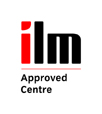Marketing your business effectively
Identify your target market and know the benefits of your products or service, ensuring you have a USP- that is what separates your product from your competitor's. Use the 80/20 rule- concentrate on the 20 per cent of customers who will make up 80 per cent of your business.
Evaluate your competition – what are they not doing so well and how could you improve on that? What opportunities are they not delivering?
Evaluate your own business the same way and ensure that you stand out from your competitors- find reasons why customers should chose you over them.
Develop your marketing plan – ensure this is clear and identify the key features and benefits to your target market. Work on your pricing taking into account factors such as being a new entry in the market, your competitors' introductory offers etc. Be willing to revise according to your market analysis.
If you are responsible for selling ensure you understand the sales process. Ensure you attract the customer's attention, create an interest, generate the desire in the potential customer and close the sale. Attention can be created in posters with effective images. In a phone call it could be using effective tone of voice or questioning. Creating a desire can be done through matching the needs of your clients to the benefits and features of your product. You may close a sale by ensuring clients have the distribution access and handling all objections and gaining agreement for the need of the product.
Distribute your product or service to your customers. This could be personal selling, mail order or a website if you are selling direct; wholesalers, retailers or agents if you are selling indirectly.
Manage your promotion. There are many forms. Most start-ups will want to use a combination:
Advertising and PR are useful for building awareness of your business. Make sure your target customers are reached by the media you advertise or promote yourself in.A direct mail campaign can spread your message to potential customers. While the costs of design, print and mailing can be high, it can be a useful tool if your business is built around high sales volumes.
Exhibitions can also provide a direct route to customers, particularly for businesses selling to other businesses. You can collect leads to follow up, make direct sales, and promote new products and new businesses. Promote yourself on the Internet. This is a useful method if your business has limited face-to-face contact with your customers and sales can be made via websites.
One of the most cost-effective promotions is to get satisfied customers to recommend your business to others. This is the ideal for start-ups to aim for and is achieved by consistently exceeding your customers' expectations.
After sales - Retaining customers is essential for any business. It is cheaper and easier than finding new business. This is a very important strategy which can aid in maintaining business but also can be used to get new business if you can sell new products to the same customers.
Set realistic targets to measure your performance against:
- What sales do you expect in your first 12 months for each customer or each type of customer?
- What sales do you expect from each type of product or service?
- What sales growth should you aim for?
- How much should you spend on marketing, month by month?
Investigate missed targets
Has something gone wrong, or have circumstances changed? What can you do about it? Continuously review your marketing plan. Adapt to market changes.
Market constantly
You or your team are the company as far as the customer is concerned. Everything you say or do create either a good or bad impression. If you have one poor team member- they will represent your weakest link and could result in heavy losses. Ensure that you and your employees are sufficiently skilled or trained to deal with each customer professionally.
Make sure that you are networking. The more people that you talk to about your business, the more sales you could generate. 6.3 Make a point of asking each new customer how and where they heard about the company.
Stay ahead of the game
What are the trends in your market? Scrutinise your competitors and plug those gaps and opportunities not being met. Be conscious also of changes you have no control of such as new legislation or any external impact which can affect your business.
 This article is written by Maureen Clarke, Business & Youth Coach, Striding Out.
This article is written by Maureen Clarke, Business & Youth Coach, Striding Out.
Need help?
Our successful team of coaches each specialise in different aspects of business. Get a coach today! Find out more about our business coaching services or email us at [email protected] to arrange a chat with one of our coaches.





